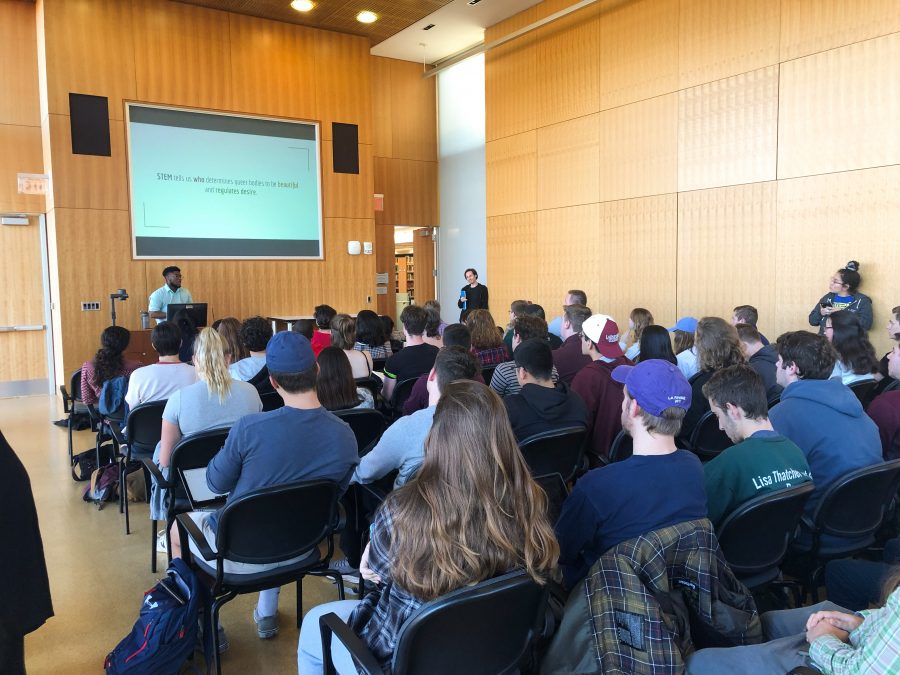The Office of Gender & Sexuality Programs ended their celebration of LGBTQ+ History Month with a faculty panel this past Wednesday that explored the deeper relationship STEM has with identity.
“Queer Inclusion & STEM: A Faculty Panel”, organized by Grayson Thompson, Associate Director of the Office of Gender & Sexuality, was led by Women’s, Gender and Sexuality Studies Professor Mary Armstrong, Mechanical Engineering Professor Katherine Groo, and Computer Science Professor Wai Liew.
Thompson said the goal of the panel was to foster a “conversation intersecting queerness and STEM fields.”
The conversation avoided focusing on who makes STEM diverse, but rather what makes STEM diverse.
Armstrong spoke on the downfalls of focusing on who rather than what attributes to diversity.
“If you have had a conversation about diversity in STEM fields, you are most likely to have had a conversation about are there women in this group? Are there people of color in this group? Are there women of color in this group? Maybe, are there queer people here?” Armstrong said.
Diversity is “incredibly important for reasons obvious to you” Armstrong explained, but by capping the notion of diversity there, the conversation avoids larger issues.
“A lot of engineering has the capacity to use power to create situations that are more liberating, recognizing the experience of diverse individuals.” Armstrong explained.
Armstrong then said that the field frequently falls short of this potential due to the human biases built into STEM that often go overlooked.
Liew spoke about the objectivity that many attribute to scientific data, even though it is, at its core, biased.
“The people in power…they control the data. So if they choose to let you use that data, you have a very specified subsection. And from that you can draw conclusions and make it true for the world without even knowing about [the other data].”
Frequently science is used as a justification to back policy, Liew said, asking “What does that actually mean?” if it is biased.
Beyond the conscious exclusion of certain groups within science, subconscious exclusion happens more frequently, such as with the initial designs of airbags.
“Airbags get invented, they start to deploy and they harm women. It is not a plot to harm women, it was just that everyone on the [design] team was male and they built it to the average specifications of the men on the team,” Armstrong said.
While eliminating these subconscious and conscious biases that influence STEM fields is not easy, the panel suggested that it can be done.
While Groo was optimistic about Lafayette’s direction to a commitment of diversity, she encouraged students to start conversations with their professors and to “always [be] thinking about the social side of [science fields] and maybe push your professors that way as well.”
Although the interactions between STEM and identity may not seem obvious at first, this panel displayed the implications that science can have on establishing societal norms.
Armstrong closed the conversation with advice to Lafayette’s STEM community: “Your choice is whether you think about that impact or not. Because it is going to have that impact, it is going to matter.”

























































































































